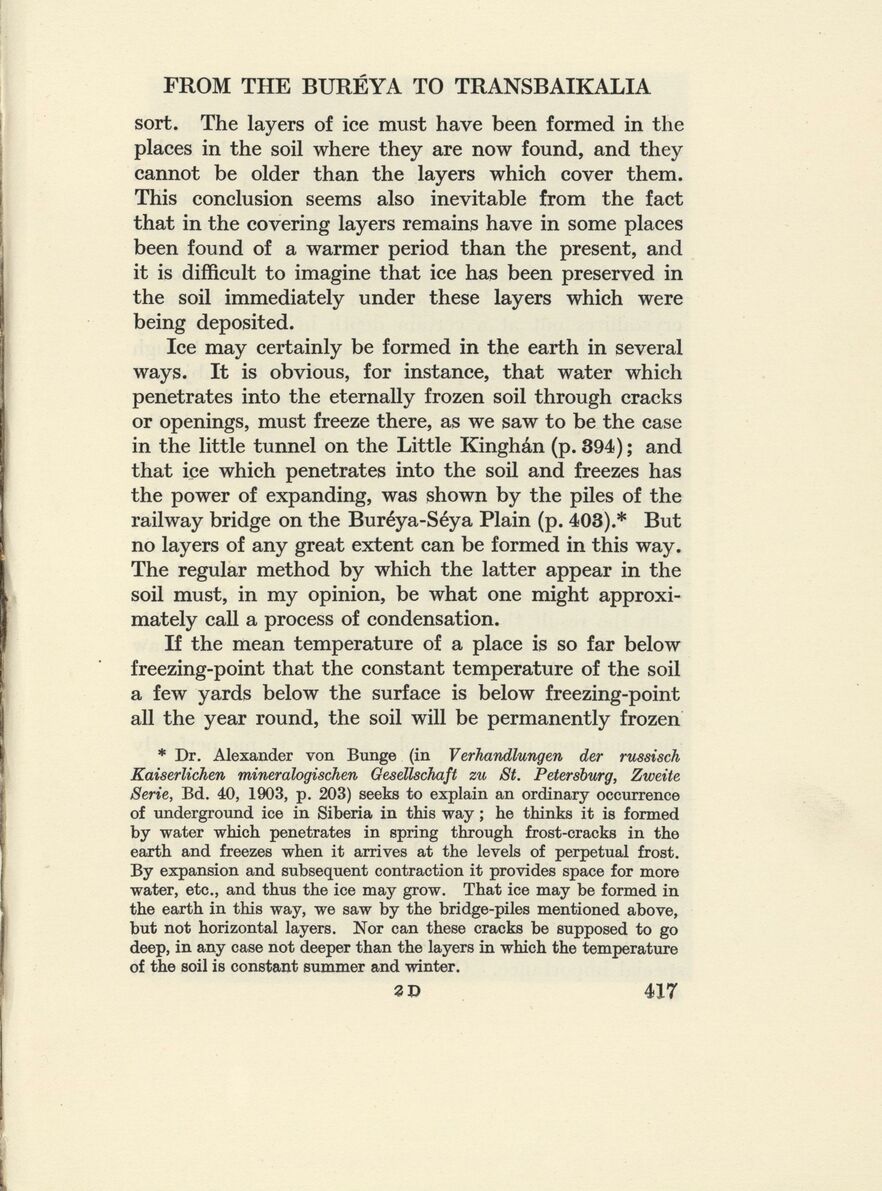
Full resolution (JPEG) - On this page / på denna sida - XVIII. From the Buréya to Transbaikalia

<< prev. page << föreg. sida << >> nästa sida >> next page >>
Below is the raw OCR text
from the above scanned image.
Do you see an error? Proofread the page now!
Här nedan syns maskintolkade texten från faksimilbilden ovan.
Ser du något fel? Korrekturläs sidan nu!
This page has never been proofread. / Denna sida har aldrig korrekturlästs.
FROM THE BURÉYA TO TRANSBAIKALIA
sort. The layers of ice must have been formed in the
places in the soil where they are now found, and they
cannot be older than the layers which cover them.
This conclusion seems also inevitable from the fact
that in the covering layers remains have in some places
been found of a warmer period than the present, and
it is difficult to imagine that ice has been preserved in
the soil immediately under these layers which were
being deposited.
Ice may certainly be formed in the earth in several
ways. It is obvious, for instance, that water which
penetrates into the eternally frozen soil through cracks
or openings, must freeze there, as wc saw to be the case
in the little tunnel on the Little Kinghån (p. 394); and
that ice which penetrates into the soil and freezes has
the power of expanding, was shown by the piles of the
railway bridge on the Buréya-Séya Plain (p. 403).* But
no layers of any great extent can be formed in this way.
The regular method by which the latter appear in the
soil must, in my opinion, be what one might approxi
mately call a process of condensation.
If the mean temperature of a place is so far below
freezing-point that the constant temperature of the soil
a few yards below the surface is below freezing-point
all the year round, the soil will be permanently frozen
* Dr. Alexander von Bunge (in Verhandlungen der russisch
Kaiserlichen mineralogischen Gesellschaft zu St. Petersburg, Zweite
Serie, Bd. 40, 1903, p. 203) seeks to explain an ordinary occurrence
of underground ice in Siberia in this way ; he thinks it is formed
by water which penetrates in spring through frost-cracks in the
earth and freezes when it arrives at the levels of perpetual frost.
By expansion and subsequent contraction it provides space for more
water, etc, and thus the ice may grow. That ice may be formed in
the earth in this way, wc saw by the bridge-piles mentioned above,
but not horizontal layers. Nor can these cracks be supposed to go
deep, in any case not deeper than the layers in which the temperature
of the soil is constant summer and winter.
3D 417
<< prev. page << föreg. sida << >> nästa sida >> next page >>